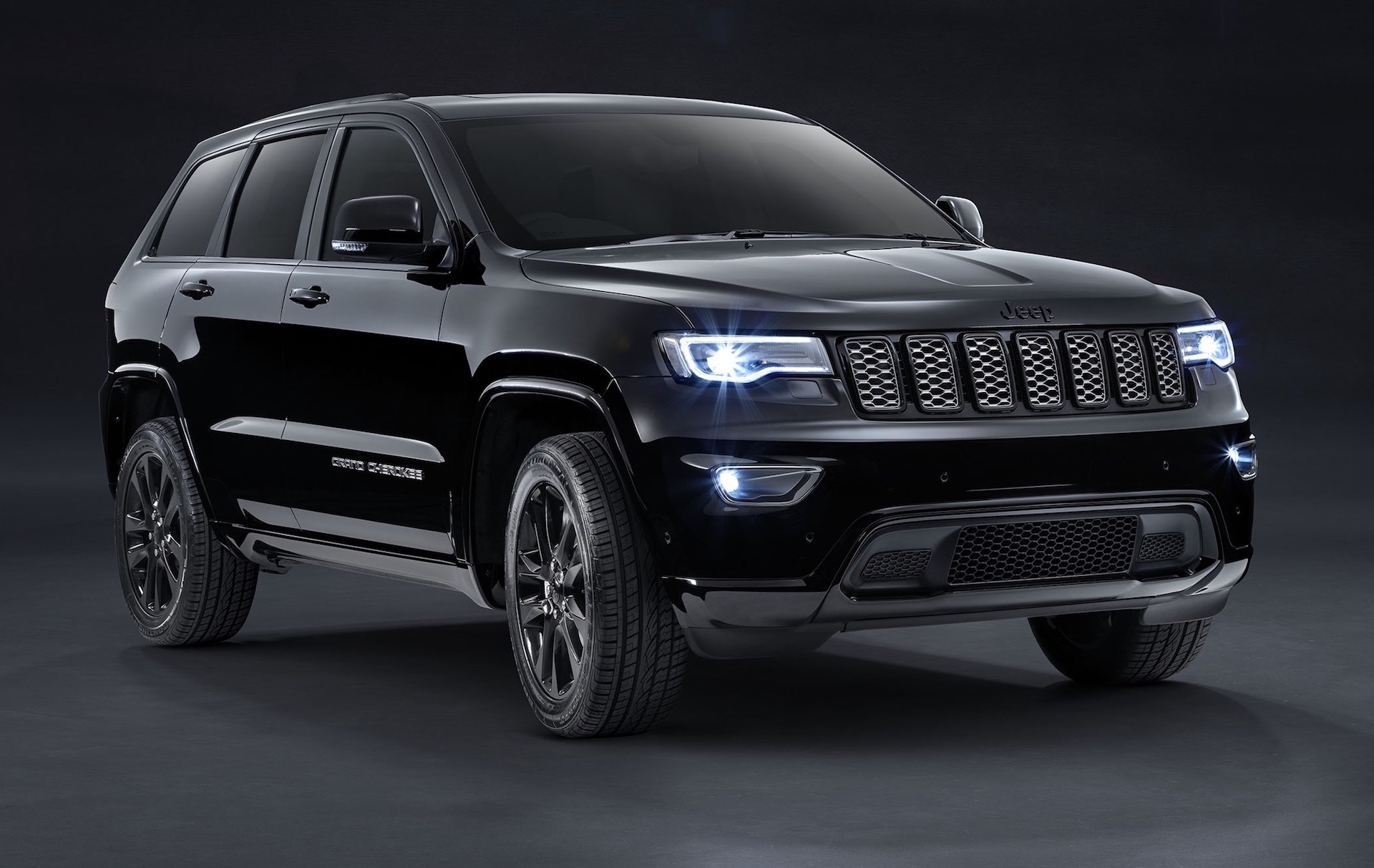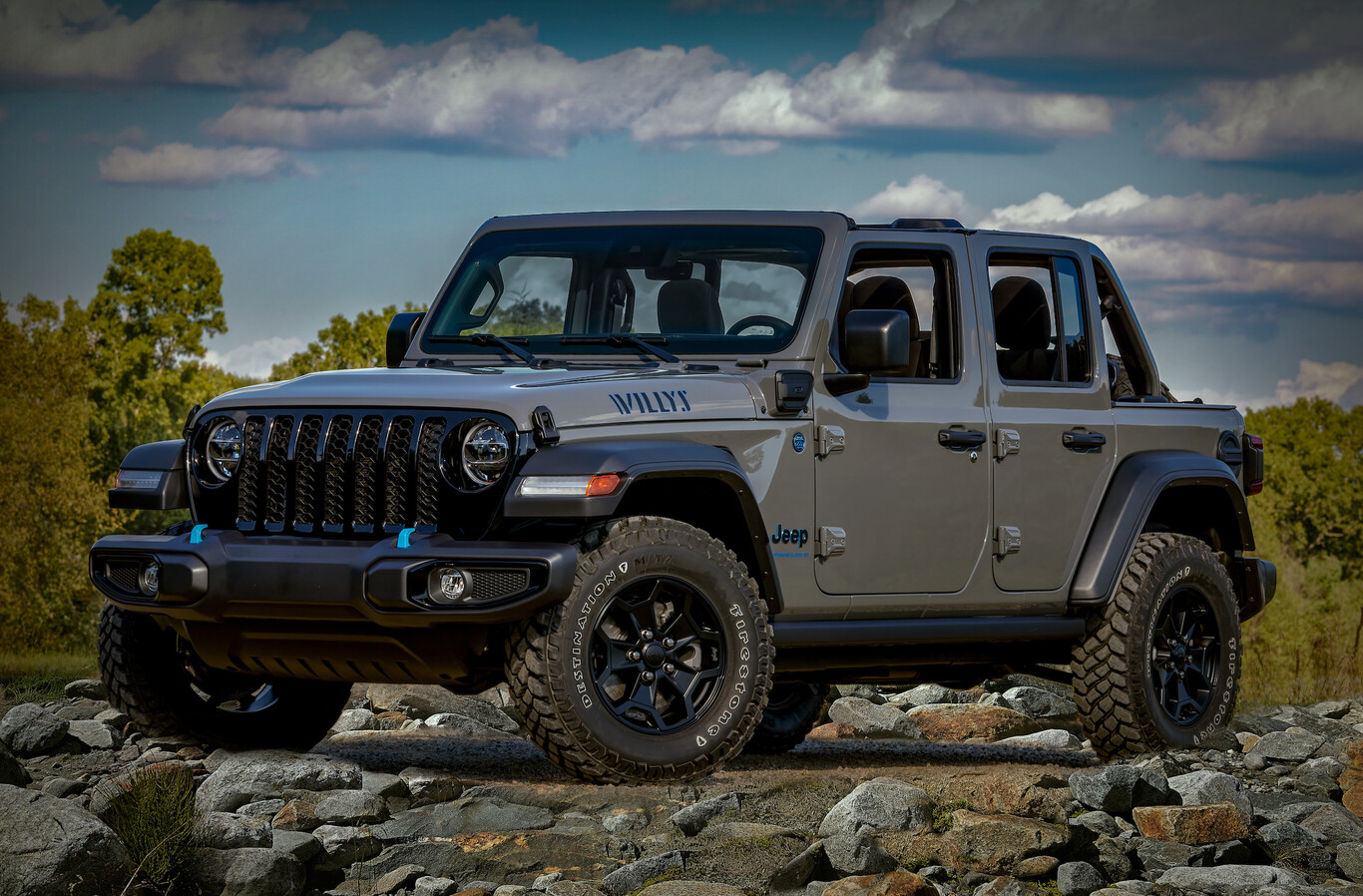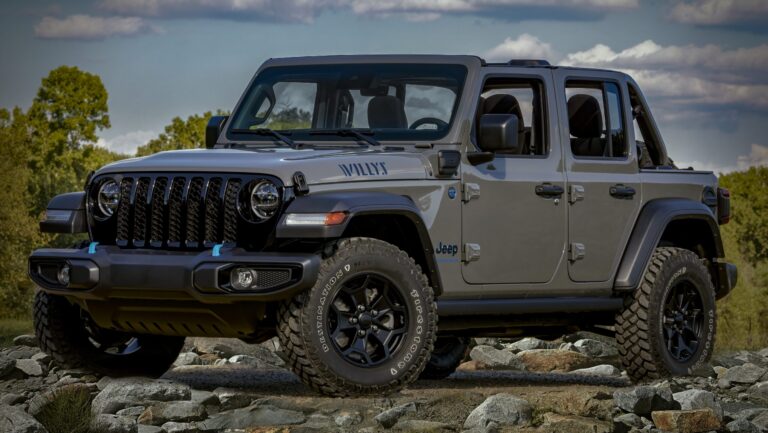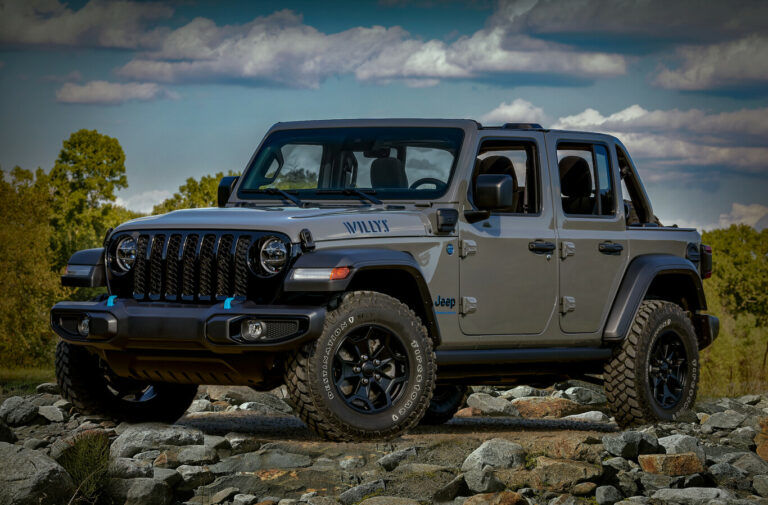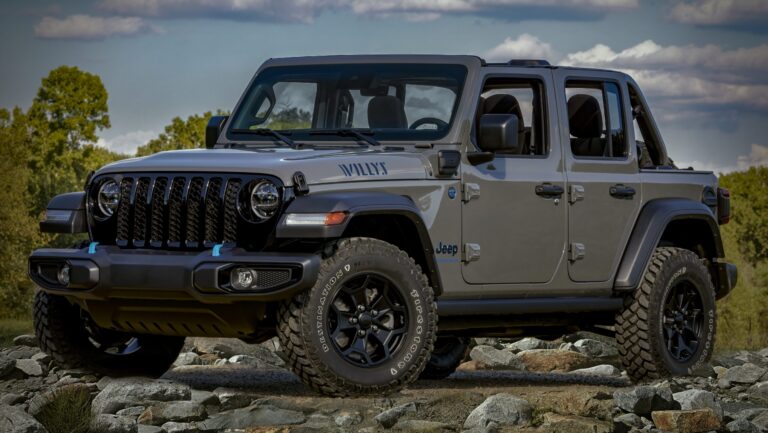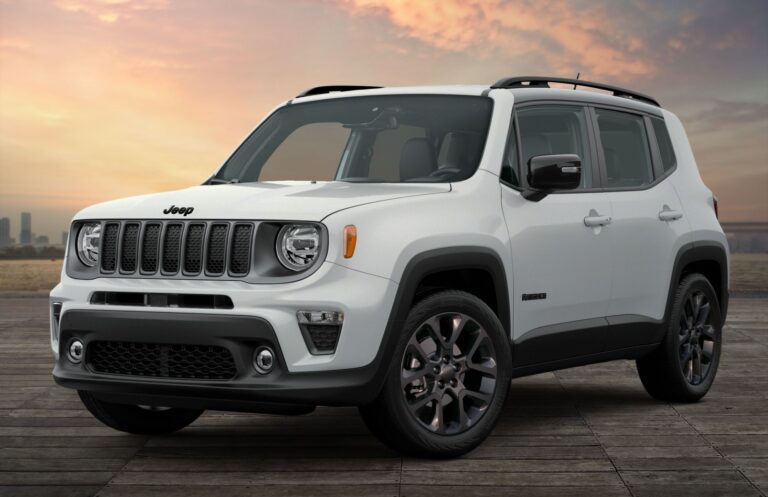Jeep JK Axles For Sale: Your Ultimate Guide to Upgrading and Replacing
Jeep JK Axles For Sale: Your Ultimate Guide to Upgrading and Replacing jeeps.truckstrend.com
The Jeep Wrangler JK (2007-2018) is an iconic vehicle, renowned for its off-road prowess and unmatched customization potential. At the heart of its capability are its axles – the unsung heroes that transfer power from the drivetrain to the wheels, bearing the brunt of every bump, rock, and obstacle encountered on the trail. For many JK owners, whether due to damage, the desire for greater strength, or the pursuit of more extreme off-road performance, the journey inevitably leads to exploring "Jeep JK axles for sale."
This comprehensive guide will delve into everything you need to know about purchasing, upgrading, and understanding the vital role of axles in your Jeep JK. From deciphering stock configurations to navigating the vast world of aftermarket options, we’ll equip you with the knowledge to make an informed decision, ensuring your JK is ready for any adventure.
Jeep JK Axles For Sale: Your Ultimate Guide to Upgrading and Replacing
Why Consider Jeep JK Axles For Sale?
There are several compelling reasons why a Jeep JK owner might find themselves in the market for new or upgraded axles:
- Damage or Wear: Stock axles, particularly the front Dana 30, can be susceptible to damage under strenuous off-road conditions, especially when running larger tires. Bent axle tubes, broken axle shafts, damaged differential housings, or worn-out bearings necessitate replacement.
- Larger Tires: One of the most common modifications for a JK is installing larger tires (35-inch, 37-inch, or even larger). Stock axles, especially the Dana 30, are often not robust enough to handle the increased stress, torque, and leverage exerted by bigger tires, leading to premature failure.
- Enhanced Off-Road Capability: For serious off-road enthusiasts, stock axles might not offer the desired strength or features. Upgrading to stronger aftermarket axles allows for the installation of features like stronger gearing, lockers, and more robust axle shafts, dramatically improving traction and durability.
- Gear Ratio Changes: If you’ve installed larger tires, re-gearing your axles is crucial to restore lost power, improve fuel economy, and reduce strain on your transmission. Sometimes, it’s more cost-effective or practical to purchase complete axle assemblies with the desired gear ratios already installed.
- Preventative Measures: For those who push their Jeeps hard, upgrading axles before they break can save time, money, and frustration on the trail.
![]()
Understanding Jeep JK Axle Types
Before diving into the market, it’s essential to understand the types of axles found in a JK and their common upgrades:

Stock JK Axles:
- Front Axle: All JK models came with a Dana 30 front axle as standard. The Rubicon models, however, featured a Dana 44 front axle. The Dana 30 is known for its relatively thin axle tubes and weaker axle shafts, making it the primary candidate for upgrades when running larger tires.
- Rear Axle: Most non-Rubicon JKs came with a Dana 44 rear axle (sometimes referred to as a "next-generation" Dana 44). Rubicon models also featured a Dana 44 rear, but with stronger differential components, typically including an electronic locker. While the rear Dana 44 is stronger than the front Dana 30, its housing can still be prone to bending under heavy abuse or with very large tires.

-
Aftermarket Axle Options: The aftermarket offers a vast array of solutions, ranging from strengthened stock-style housings to complete, heavy-duty axle assemblies.
- Upgraded Dana 44: Many companies offer heavily reinforced Dana 44 front and rear axles. These typically feature thicker axle tubes, stronger knuckles, larger axle shafts (e.g., 30-spline or 35-spline), and robust differential covers. They are a popular choice for 37-inch tires and moderate to hard off-roading.
- Dana 60 and Beyond: For those running 38-inch tires and larger, or engaging in extreme rock crawling, Dana 60 axles (or even Dana 80s) become the go-to choice. These are significantly larger and stronger, capable of handling immense abuse. Companies like Dynatrac, Currie Enterprises, TeraFlex, and G2 Axle & Gear are leaders in this segment, offering "crate axles" that are ready to bolt in.
- Hybrid/Custom Axles: Some manufacturers offer unique designs that blend features from different axle types or provide proprietary enhancements for maximum strength and performance.
Where to Find Jeep JK Axles For Sale
The market for JK axles is diverse, offering options for every budget and need:
-
New Aftermarket Retailers:
- Online Stores: Websites like Northridge4x4, Quadratec, 4 Wheel Parts, Summit Racing, and direct manufacturer sites (Dynatrac, Currie, TeraFlex) offer a wide selection of new axle assemblies.
- Specialty Off-Road Shops: Local and regional off-road shops often stock popular axle upgrades or can order them for you, sometimes offering installation services as well.
- Pros: Brand new components, warranty, latest technology, often come pre-assembled with desired gearing and lockers.
- Cons: Highest cost.
-
Used Axles:
- Online Forums & Social Media Groups: Dedicated Jeep JK forums (e.g., JK-Forum, JeepGarage) and Facebook Marketplace/groups are excellent places to find used axles from private sellers.
- Junkyards/Salvage Yards: While less common for complete aftermarket assemblies, you might find stock JK axles here, often at a lower price. Careful inspection is crucial.
- Specialized Used Parts Dealers: Some businesses specialize in selling used Jeep parts, including axles.
- Pros: Significant cost savings, potential for finding already upgraded stock axles (e.g., Rubicon D44s).
- Cons: No warranty, potential for hidden damage, unknown history, may require rebuilding or new components (bearings, seals, shafts).
Key Considerations When Buying JK Axles
Making the right choice requires careful consideration of several factors:
- Intended Use: This is paramount. Are you a daily driver with occasional light trail use, a weekend warrior tackling moderate trails, or a hardcore rock crawler? Your usage dictates the required strength.
- Tire Size: The larger your tires, the stronger your axles need to be. A good rule of thumb:
- Up to 33-inch: Stock D30/D44 are generally adequate.
- 35-inch: Upgraded D30 (sleeved/gusseted) or D44 front is recommended. Rear D44 is usually fine.
- 37-inch: Aftermarket D44s (front and rear) with chromoly shafts are highly recommended.
- 38-inch+: Dana 60s or stronger are typically required.
- Budget: Axle upgrades can range from a few hundred dollars for used stock components to $10,000+ for a complete, custom-built set of Dana 60s. Define your budget early.
- Gear Ratios: If you’re buying a complete axle assembly, ensure the gear ratios match your existing axle (if only replacing one) or are appropriate for your tire size and engine/transmission combination (if replacing both). Mismatched gear ratios will damage your transfer case.
- Lockers/LSDs: Decide if you want a locker (for maximum traction) or a limited-slip differential (LSD) for improved on-road manners with better off-road traction than open differentials. Many aftermarket axles come with lockers pre-installed.
- Axle Width: Most aftermarket axles are available in stock JK width, but wider options (e.g., 68-70 inches) are common for increased stability, especially with larger tires. Consider fender clearance and tire coverage laws in your area.
- Bolt Pattern: JK axles use a 5×5-inch bolt pattern. Ensure any replacement axle matches this.
- Installation Complexity: Swapping axles is a significant mechanical task. Consider whether you have the tools and expertise for a DIY installation or if you’ll need professional help. This will impact your overall cost.
The Buying Process: Tips for a Smooth Purchase
- Research, Research, Research: Understand the different brands, their reputations, and the specific features of their axles. Read reviews and seek advice from experienced JK owners.
- Inspect Used Axles Thoroughly:
- Straightness: Look down the axle tubes from both ends. Any visible bend is a red flag.
- Weld Integrity: Check all welds for cracks or poor penetration.
- Fluid Leaks: Look for oil residue around the differential cover, pinion seal, and axle seals.
- Play in Pinion/Axle Shafts: Excessive play can indicate worn bearings or U-joints.
- Rust: Surface rust is common, but deep pitting or structural rust is a concern.
- Spin the Wheels: If possible, lift the vehicle and spin the wheels to listen for abnormal noises.
- Ask Detailed Questions (for used axles):
- What vehicle did it come from (2-door/4-door, engine, transmission)?
- What tire size was run on it?
- What’s the current gear ratio?
- Does it have a locker or LSD? Which one?
- Has it ever been rebuilt or repaired?
- Why are you selling it?
- Verify Compatibility: Double-check that the axle will physically bolt into your JK, considering control arm mounts, track bar mounts, and shock mounts. Aftermarket axles are generally designed for direct bolt-in.
- Factor in Shipping: Axles are heavy and bulky. Shipping costs can be substantial, especially for long distances. Get a quote before committing to a purchase.
- Negotiate: Don’t be afraid to negotiate, especially on used items.
Potential Challenges and Solutions
- Finding the Right Fit: The sheer variety can be overwhelming.
- Solution: Clearly define your needs (tire size, usage, budget) and stick to them. Consult with reputable off-road shops or experienced enthusiasts.
- Budget Constraints: High-quality axles are expensive.
- Solution: Prioritize. Start with the axle most prone to failure (front D30) or save up for a complete solution. Consider financing options if available from retailers.
- Installation Difficulties: Not a simple bolt-on for the inexperienced.
- Solution: Plan for professional installation if you’re not confident. Factor this cost into your budget.
- Hidden Damage (Used Axles): Can lead to unexpected costs.
- Solution: Thorough inspection is key. If possible, buy from a reputable seller or a specialized used parts dealer who offers some guarantee. Assume you might need to replace seals and bearings as a preventative measure.
Benefits of Upgrading Your JK Axles
Investing in the right Jeep JK axles for sale brings a multitude of benefits:
- Unmatched Durability: Stronger axles mean fewer trail breakages and more peace of mind.
- Increased Capability: Accommodate larger tires and utilize lockers for superior traction in challenging terrain.
- Optimized Performance: Correct gear ratios restore power and efficiency lost with larger tires.
- Enhanced Safety: A robust drivetrain reduces the risk of components failing under stress.
- Future-Proofing: An axle upgrade is a foundational modification that supports future vehicle enhancements.
Jeep JK Axles For Sale: Estimated Price Guide
This table provides estimated price ranges for complete axle assemblies (housing, shafts, differential, gears, and brakes unless specified), which can vary significantly based on brand, condition, features (lockers, specific gear ratios), and seller.
| Axle Type & Configuration | Condition | Key Features | Estimated Price Range (USD) |
|---|---|---|---|
| Stock Dana 30 Front | Used | Open diff, stock gears (3.21, 3.73, 4.10) | $300 – $800 |
| Stock Dana 44 Rear (Non-Rubicon) | Used | Open diff, stock gears (3.21, 3.73, 4.10) | $500 – $1,200 |
| Stock Dana 44 Front (Rubicon) | Used | E-locker, stock gears (4.10), stronger shafts | $1,500 – $2,500 |
| Stock Dana 44 Rear (Rubicon) | Used | E-locker, stock gears (4.10), stronger shafts | $1,500 – $2,500 |
| Aftermarket Reinforced Dana 44 Front | New | Thicker tubes, forged knuckles, 35-spline shafts, choice of locker/gearing | $4,500 – $7,500+ |
| Aftermarket Reinforced Dana 44 Rear | New | Thicker tubes, choice of locker/gearing | $4,000 – $6,500+ |
| Aftermarket Dana 60 Front | New | Massive strength, 35/40-spline shafts, heavy-duty diff, choice of locker/gearing | $7,000 – $12,000+ |
| Aftermarket Dana 60 Rear | New | Massive strength, 35/40-spline shafts, heavy-duty diff, choice of locker/gearing | $6,500 – $11,000+ |
| Bare Aftermarket Axle Housing (D44/D60) | New | Just the housing, no internals, shafts, or brakes | $1,500 – $4,000 |
Note: Prices are estimates and can fluctuate based on market demand, specific features, brand, and condition. Installation costs are not included and can range from $800 – $2000+ per axle.
Frequently Asked Questions (FAQ)
Q: Do I need to replace both axles at the same time?
A: Not necessarily. If only one axle is damaged or you’re upgrading in stages, you can replace them individually. However, if you’re changing gear ratios, you must change the gears in both front and rear axles to match, or your transfer case will be damaged.
Q: What’s the biggest difference between a Dana 30 and a Dana 44?
A: The Dana 44 is significantly stronger. It has larger ring and pinion gears, larger axle shafts (typically 30-spline vs. 27-spline for the D30), and often thicker axle tubes. The D30 is generally considered weak for tires larger than 33 inches.
Q: Can I put a Dana 60 under my JK?
A: Yes, many aftermarket manufacturers offer bolt-in Dana 60 (or even Dana 80) axle assemblies specifically for the JK. These are the ultimate upgrade for extreme use and very large tires.
Q: What does "re-geared" mean, and why is it important?
A: Re-gearing means replacing the ring and pinion gears inside the differential to change the final drive ratio. It’s crucial when installing larger tires to restore power, improve fuel economy, and reduce strain on the engine and transmission. It also helps the vehicle stay in its power band.
Q: How much does axle installation typically cost?
A: Professional installation can range from $800 to $2000+ per axle, depending on the complexity (e.g., bare housing vs. complete bolt-in), shop labor rates, and any additional parts needed (e.g., driveshafts, brake lines).
Q: Are junkyard axles a good option?
A: They can be a cost-effective option for stock replacements, especially if you’re on a tight budget. However, they come with risks: unknown history, potential for hidden damage, and often require rebuilding (seals, bearings). Thorough inspection is critical.
Conclusion
Navigating the world of Jeep JK axles for sale can seem daunting, but with the right knowledge, it becomes an exciting journey towards building a more capable and reliable off-road machine. Whether you’re replacing a damaged stock unit or embarking on a full-blown axle upgrade to conquer the toughest trails, understanding the types, considerations, and buying process is paramount. Invest wisely in your JK’s foundation, and you’ll unlock its true potential, ensuring countless miles of confident and exhilarating adventures.
